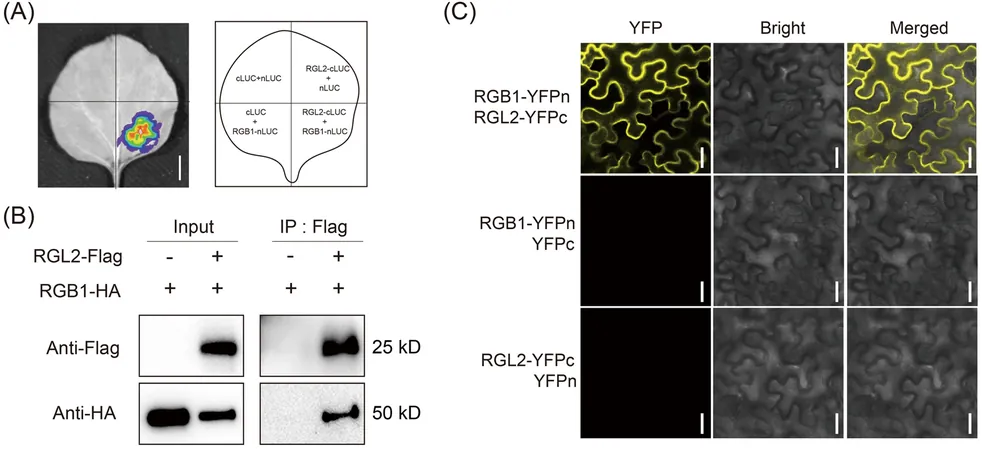
Revolutionary Gene Discovered That Could Transform Rice Grain Length and Boost Yields
2024-10-10
Author: Li
Introduction
In a groundbreaking discovery, a research team led by Professor Wu Yuejin at the Hefei Institutes of Physical Science, part of the Chinese Academy of Sciences, has identified a crucial gene known as RGL2 that plays a pivotal role in regulating rice grain length. This monumental finding, recently published in the journal *Physiologia Plantarum*, opens new avenues for enhancing high-yield rice breeding.
Importance of Rice Grain Size
Rice breeding aims to achieve high yields, and the dimensions of rice grains—specifically their length and width—are significant agronomic traits that directly influence overall productivity. In their innovative research, Wu's team identified a mutant variant, rgl2, which astonishingly displayed shorter grain lengths while maintaining consistent grain width due to physical mutagenesis.
Cytological Analysis Findings
Through meticulous cytological analysis, the team found that the reduction in grain length was mainly caused by a decrease in the number of cells rather than alterations in individual cell length. The mapping and functional studies revealed that the RGL2 gene encodes a keratin-associated protein (KAP), which is prominently expressed in the young panicle of the rice plant.
Significance of RGL2
The implications of this research are extraordinary: the overexpression of the RGL2 gene was shown to substantially increase grain length and elevate the yield per plant by enhancing cell proliferation within the grains. This phenomenon indicates that this gene is not only crucial for grain size but is also a significant factor in boosting crop yield—a game-changer for food security.
RGL2 and G Protein Signaling Pathway
Furthermore, the team discovered that RGL2 interacts with the RGB1 protein, highlighting its potential to positively influence grain type and yield through the G protein signaling pathway. Delving deeper, they found that RGL2 might also manipulate grain length by fine-tuning the cell cycle, effectively fostering the growth of additional cells, which contributes to longer grains.
Conclusion and Future Implications
This vital discovery adds depth to our understanding of the genetic mechanisms behind rice grain characteristics and paves the way for novel molecular breeding strategies aimed at maximizing rice yields. As the world's population continues to grow, such innovations could be key to achieving food security and sustaining agricultural productivity. The implications of RGL2 extend beyond genetics, promising to revolutionize how we approach rice cultivation and food supply globally. Stay tuned, as further developments from this research team may hold even more surprises that could reshape the agricultural landscape in the years to come!


 Brasil (PT)
Brasil (PT)
 Canada (EN)
Canada (EN)
 Chile (ES)
Chile (ES)
 España (ES)
España (ES)
 France (FR)
France (FR)
 Hong Kong (EN)
Hong Kong (EN)
 Italia (IT)
Italia (IT)
 日本 (JA)
日本 (JA)
 Magyarország (HU)
Magyarország (HU)
 Norge (NO)
Norge (NO)
 Polska (PL)
Polska (PL)
 Schweiz (DE)
Schweiz (DE)
 Singapore (EN)
Singapore (EN)
 Sverige (SV)
Sverige (SV)
 Suomi (FI)
Suomi (FI)
 Türkiye (TR)
Türkiye (TR)